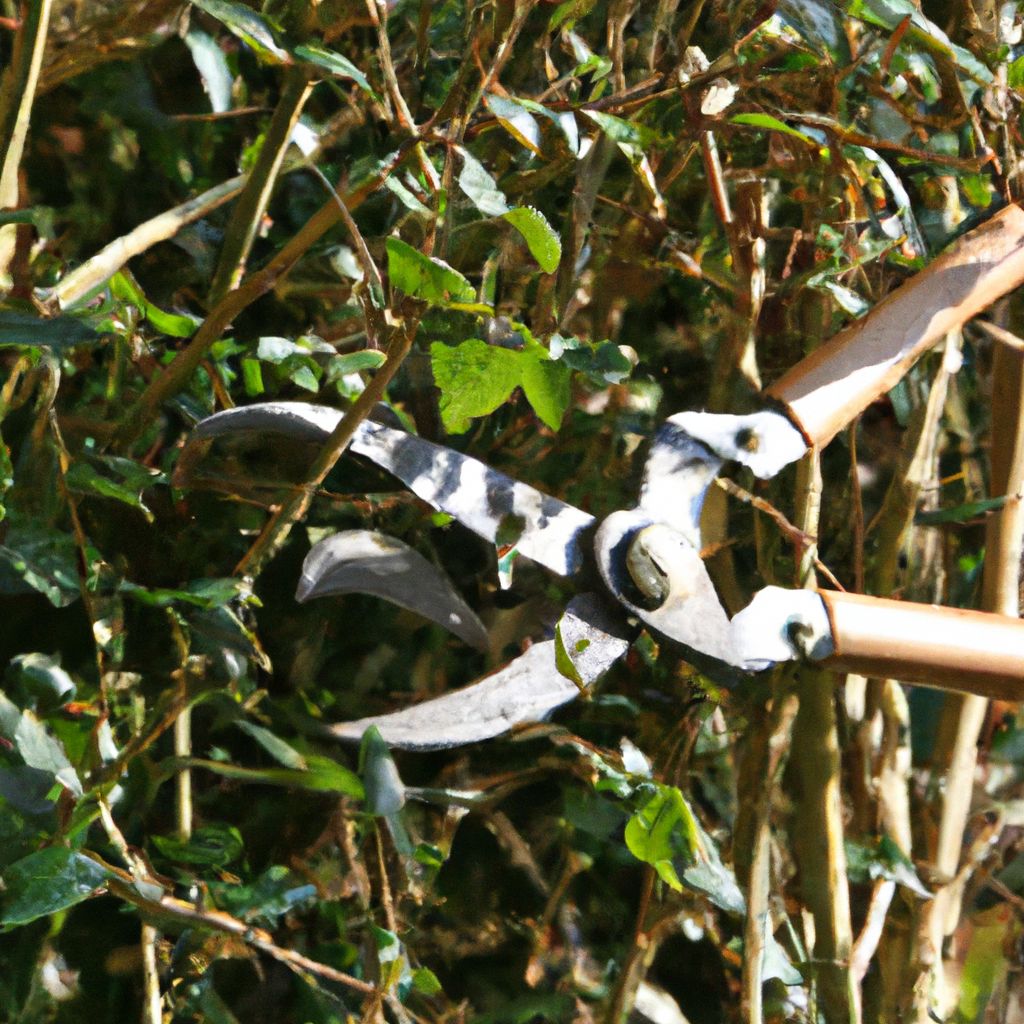Key Takeaways:
- Rejuvenation pruning is a technique used to promote healthy growth and improve the overall appearance of shrubs.
- Timing is important for rejuvenation pruning, and it is usually best to prune in late winter or early spring, except for shrubs that bloom on old wood.
- There are different techniques for rejuvenation pruning, including hard pruning and gradual pruning, and the suitable technique depends on the shrub species.
- Before pruning, it is important to consider factors such as the health and appearance of the shrub, as well as the proper pruning angles and tools to avoid damage.
- After rejuvenation pruning, extra care is required for shrubs, including monitoring environmental conditions, watering needs, and avoiding synthetic fertilizers.
- Examples of shrubs suitable for rejuvenation pruning include snowball viburnum, redtwig dogwood, false indigo, skunkbush sumac, fragrant sumac, elderberry, and more.
- Rejuvenation pruning is an important practice for maintaining the health and appearance of shrubs, and seeking professional assistance and continued maintenance is recommended.
Introduction to Rejuvenation Pruning for Shrubs
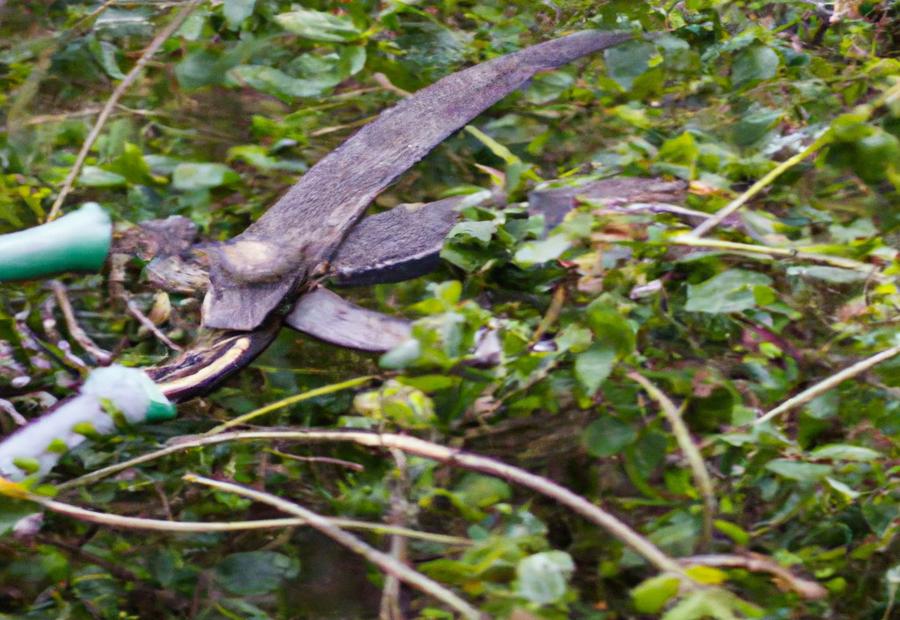
Photo Credits: Gardeninggurus.Org by Juan Lopez
Rejuvenation pruning for shrubs is a vital technique for maintaining the health and appearance of your plants. In this section, we’ll explore the purpose of rejuvenation pruning and how it contributes to the vitality of your shrubs. Additionally, we’ll discuss the significance of pruning in both promoting overall plant health and enhancing the visual appeal of your garden. Get ready to discover the secrets to rejuvenating and nurturing your shrubs for long-lasting beauty and vitality.
Explanation of rejuvenation pruning and its purpose
Rejuvenation pruning is a horticultural technique used to restore and renew shrubs. It involves cutting back the shrub to its base or removing old branches. The purpose? To promote new growth, rejuvenate overgrown shrubs, and encourage better flowering.
Benefits of rejuvenation pruning? It helps to:
- Remove dead or diseased branches, improving air circulation & light penetration.
- Promote a balanced, aesthetically pleasing form.
- Encourage flower production.
Timing is key. It’s best to prune in late winter or early spring, except for certain shrubs that bloom on old wood. Then, prune after they’ve finished flowering.
Two main approaches to rejuvenation pruning: hard and gradual. Hard means cutting the entire shrub down to the ground. Gradual means removing one-third of the old branches over three years.
Before pruning, assess the shrub’s health & appearance. Use proper tools & angles to minimize damage.
After pruning, provide extra care. Monitor environmental conditions, use natural amendments, and seek help from a Certified Arborist if needed.
Shrubs that respond well to rejuvenation pruning include snowball viburnum, redtwig dogwood, false indigo, skunkbush sumac, fragrant sumac, elderberry, and bush honeysuckle. With proper care, these species can thrive!
Importance of pruning shrubs for health and appearance
Pruning shrubs is essential for their health and looks. It boosts new growth, removes dead or sickly branches, and shapes the shrub to make it attractive. It also means better air circulation and sunlight, decreasing the risk of fungal ailments and improving the shrub’s wellbeing. Pruning increases flower production and makes the display more vibrant. By pruning shrubs at the correct time and using proper techniques, gardeners can ensure their shrubs stay healthy, vigorous, and pleasing. The importance of pruning shrubs for health and appearance cannot be understated.
Moreover, keeping to a regular pruning schedule can help the long-term health of shrubs by avoiding overcrowding, reducing the danger of pests and diseases, and increasing their lifespan. When considering rejuvenation pruning, it’s crucial to take into account the shrub’s growth habits and blooming patterns. Some shrubs bloom on old wood, producing flowers on branches from previous years. For these types of shrubs, it’s important to avoid rejuvenation pruning during blooming season; otherwise, there may be no blooms the following year.
Additionally, one must use the right angles when making cuts during rejuvenation pruning to minimize damage to the shrub. Sharp tools will help stop tearing or splintering of branches. Not all shrubs are suitable for rejuvenation pruning, particularly those that don’t tolerate severe cutting back or have growth habits that may be disrupted by this kind of pruning.
Rejuvenation pruning is not a one-time process. It requires ongoing care and maintenance after the initial cutback. Shrubs need special attention during their recovery period, including monitoring environmental conditions such as adequate watering and avoiding synthetic fertilizers. Instead, natural amendments will support healthy regrowth.
An interesting fact is that rejuvenation pruning is known as an effective method to improve the health and appearance of various shrubs. Professionals, called Certified Arborists, can provide advice and assistance with rejuvenation pruning and maintenance, ensuring optimal results for any shrub.
The Benefits and Timing of Rejuvenation Pruning
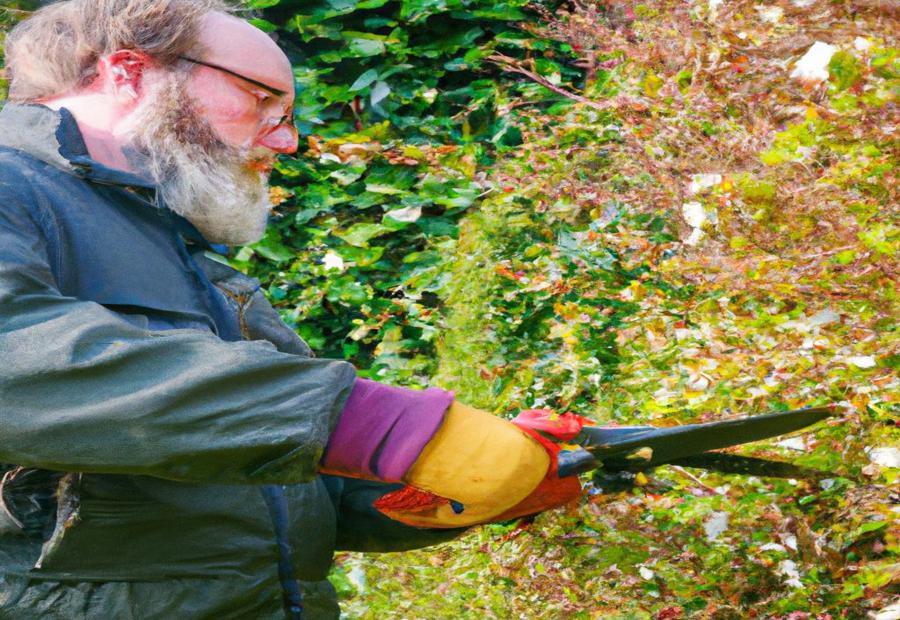
Photo Credits: Gardeninggurus.Org by Arthur Martinez
Rejuvenation pruning for shrubs offers numerous benefits, such as promoting healthy growth, enhancing flowering, and improving the overall appearance. This section will delve into the proper timing for rejuvenation pruning in late winter or early spring, as well as exceptions for shrubs that bloom on old wood. Prepare to discover how rejuvenation pruning can revitalize your shrubs and yield stunning results.
Promotes healthy growth and improves overall appearance of shrubs
Rejuvenation pruning is a technique that boosts healthy growth and improves the look of shrubs. By using rejuvenation pruning techniques, such as hard pruning or gradual pruning, shrubs get a renewed vitality and vigor. This involves cutting back or removing older branches, which encourages new growth and better air circulation and sun exposure. Therefore, the shrub’s health is increased, with more foliage and a nicer form.
Also, rejuvenation pruning not just concentrates on the structure but boosts the blooming potential of shrubs. By taking away old wood and encouraging new shoots to develop, rejuvenation pruning increases flower production. This is great for shrubs that bloom on both old and new wood.
The best time to do rejuvenation pruning is crucial for success. Late winter or early spring is best since it allows for ideal regrowth during the growing season. But certain shrubs that bloom on old wood should be pruned when they finish flowering to prevent interrupting their bloom cycles.
Before initiating rejuvenation pruning, caution should be taken. Not all shrubs are suitable for this technique, some may not deal with severe cutting back or may not respond well to new growth stimulation. It is vital to evaluate factors like plant health and appearance before making any decisions.
To prevent harm to the shrub while doing rejuvenation pruning, proper angles and tools should be used during the cutting process. This ensures clean cuts that promote quicker healing and decreases the risk of disease or pest infestations.
Even though there could be changes in landscape dynamics and lessened flowering during the first year after rejuvenation pruning, it is important to watch and provide proper care for the shrub during this period. Extra attention should be given to watering needs and environmental conditions to aid its recovery.
Enhances flowering and increases flower production
Rejuvenation pruning has a key role in boosting flowering and flower production in shrubs. It stimulates new growth and refreshes the plant, causing more lively and copious blooms. By cutting off old branches and promoting new ones, it lets in more air circulation and sun penetration – essential for flower formation.
It activates healthy growth: Rejuvenation pruning sparks the growth of fresh, young shoots that are better, leading to healthier plant growth.
Grows flower production: By cutting back older wood and energizing new growth, rejuvenation pruning encourages flower production on shrubs.
Enhances look: The fresh growth from rejuvenation pruning leads to shrubs with fuller foliage and better appearance.
Improves flower quality: With better access to light and nutrients, the flowers produced after rejuvenation pruning tend to be bigger, brighter, and longer-lasting.
Extends blooming: By cutting off old branches, rejuvenation pruning can change the blooming period of certain shrubs, allowing for more spread out and extended display of flowers throughout the year.
Attracts pollinators: With an increase in flower production, there is a higher chance of drawing in pollinators like bees and butterflies to the garden.
When looking at the advantages of rejuvenation pruning for fostering flowering in shrubs and increasing flower production, it is essential to take note that timing is essential. Late winter or early spring is generally the ideal time to do this before new growth starts. Still, it is essential to be aware that some shrubs bloom on old wood. These exceptions need different pruning techniques or careful thought before executing rejuvenation pruning. Examining each individual plant’s needs carefully will ensure successful flower enhancement through this method.
Proper timing of rejuvenation pruning in late winter or early spring
Rejuvenation pruning is best done in late winter or early spring. This is key for optimal growth and health of the shrubs. To get the most out of it, wait ’til the dormant season. The shrubs will have shed their leaves, giving better visibility and access to branches.
Pruning during late winter or early spring allows the shrub to utilize its energy reserves for new growth. Monitor weather conditions – extreme cold or frost can be dangerous for newly pruned shrubs. Milder temperatures and no frost is ideal.
This yields vibrant, thriving shrubs. However, certain plants, such as lilacs, spirea, and honeysuckle, must be pruned immediately after flowering. This avoids cutting off next year’s flower buds.
Gardeners can make sure they get successful rejuvenation pruning outcomes by following these steps and considering individual plant requirements. History has shown that this specific timing yields stronger regrowth and improved flowering. Pruning during late winter or early spring gives shrubs a fresh start – literally!
Exceptions for shrubs that bloom on old wood
Most shrubs benefit from pruning to stay healthy and look good. But there are some that bloom on old wood, like lilacs, forsythia, spirea, and viburnums. Prune these in late winter or early spring, before new growth starts. Don’t hard prune them, as it will remove all potential flower buds. Gradual pruning is better. That’s removing one-third of the old branches over three years. That way, the shrubs can stay in bloom. Gardeners can rejuvenate their shrubs while seeing flowers every year. Whether it’s hard pruning or gradual pruning, your shrubs will make a stylish comeback.
Techniques of Rejuvenation Pruning
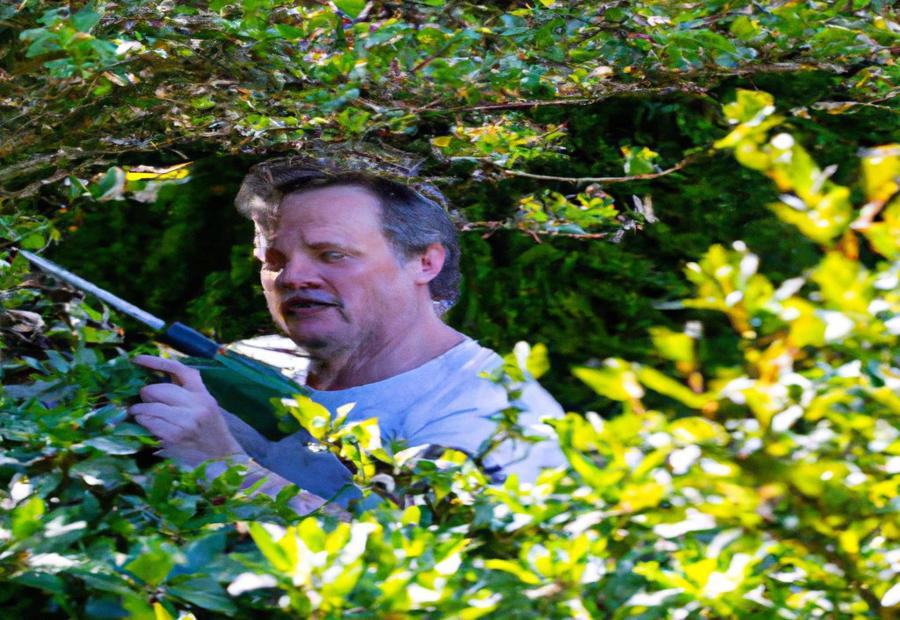
Photo Credits: Gardeninggurus.Org by Roy Jones
Rejuvenation pruning is a powerful technique that can breathe new life into your shrubs. In this section, we’ll explore two primary methods: hard pruning, where the entire shrub is cut down to the ground, and gradual pruning, where one-third of old branches are removed over three years. Discover the suitable shrubs for each technique and unleash the potential of your garden with these rejuvenation pruning methods.
Hard pruning: Cutting the entire shrub down to the ground
Hard pruning is a technique of cutting down the entire shrub to the ground level. It’s known as rejuvenation pruning and is used to revive and renew neglected or overgrown shrubs.
Before beginning, it’s important to check the shrub’s health and condition. Take disease or pest infestation into account, along with the plant’s structural integrity.
You’ll need sharp bypass loppers, hand pruners and a pruning saw for the job. Make sure to clean and sanitize them to stop diseases from spreading.
Timing is key. Do it late winter or early spring when the shrub is dormant. This will let new growth come during the growing season.
The hard pruning process involves removing all branches at ground level with clean, precise cuts. Get rid of the cut branches responsibly and be careful not to harm other plants or structures.
Afterwards, you must give aftercare and maintenance to the shrub. Monitor the shrub’s progress, water it and give natural amendments. Avoid synthetic fertilizers. If in doubt, ask a Certified Arborist.
Hard pruning may not be suitable for all types of shrubs. Some species may need more gradual forms of rejuvenation pruning, or may bloom on old wood, which requires different techniques. Ask a professional for advice.
Doing hard pruning helps keep your shrubs healthy and looking great. But, if unsure, seek help or guidance. Professional knowledge can really help the shrubs’ health and future growth.
Gradual pruning: Removing one-third of old branches over three years
Gradual pruning is a method for giving shrubs a fresh start. Cut one-third of old branches over three years. This way the shrub will stay the same size, but new shoots can develop.
Look at the shrub’s health & appearance first. Remove dead or sick branches right away. This sets the foundation for the pruning.
Year 1, remove one-third of the oldest branches. Cut them back to the ground or to another healthy branch.
Year 2, cut another one-third of the remaining old branches.
Year 3, cut one-third of any old branches left. This gradual approach keeps the plant balanced & not shocked.
Not all shrubs are good with this pruning. Ask a Certified Arborist first. Also keep an eye on the environment & give proper care afterwards. Prune wisely & watch your shrubs thrive!
Suitable shrubs for each pruning technique
Rejuvenation pruning is great for promoting healthy growth and sprucing up the look of shrubs. This involves cutting them down to the ground, or trimming old branches over time. It depends on the shrub’s characteristics and needs which pruning technique to use.
Some shrubs are suited for hard pruning – cutting down to the ground. These include Snowball viburnum, Redtwig dogwood, False indigo, Skunkbush sumac, Fragrant sumac, Elderberry, Bush honeysuckle, Ninebark, Prairie rose, Western wild rose, Shrubby cinquefoil, Pussy willow, lilacs, forsythia, spirea, viburnums, honeysuckle, and more.
While other shrubs suit gradual pruning – removing one-third of old branches over three years. For example, lilacs, forsythia, and spirea.
When choosing a pruning technique, consider the shrub’s needs and characteristics. Plant health and appearance must be taken into account, to avoid damaging the shrub. Make sure to use the correct pruning angles and tools too.
So, before pruning, remember these precautions and considerations to keep your shrubs happy and healthy.
Precautions and Considerations
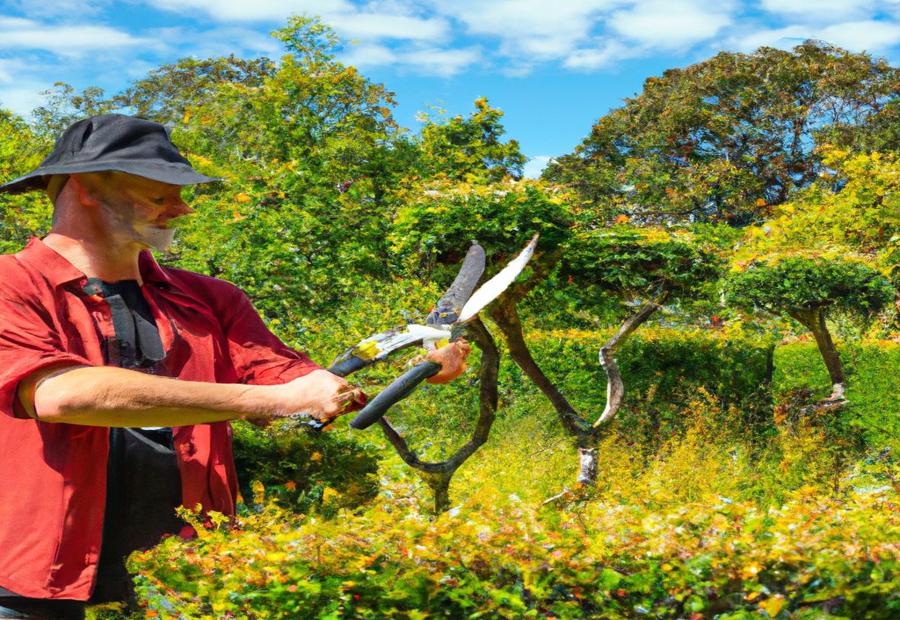
Photo Credits: Gardeninggurus.Org by Scott Baker
When it comes to rejuvenation pruning for shrubs, it’s crucial to be mindful of certain precautions and considerations. In this section, we will explore which shrubs should be spared from this pruning technique, factors to consider before pruning, and the proper angles and tools to use to avoid damaging the shrubs. Additionally, we’ll discuss the potential effects on the landscape and flowering during the first year. Stay tuned for valuable insights into effective shrub rejuvenation pruning practices!
Shrubs that should not be subjected to rejuvenation pruning
Rejuvenation pruning is a technique to promote healthy growth and improve the look of shrubs. But, not all shrubs are suitable. Boxwood, yew, and holly are evergreen shrubs. Their dense foliage takes time to regrow if cut severely. So, it is best to avoid this pruning.
Weigela or barberry have upright or arching growth. Rejuvenation pruning involves cutting the whole shrub to the ground which can destroy their natural form.
Azaleas or camellias prefer lighter pruning over rejuvenation. They usually blossom on old wood. So, gentler pruning must be done.
Lilacs or forsythia bloom on old wood too. Rejuvenation pruning removes the older branches with flower buds. This may reduce or eliminate flowering display for several years.
If a shrub is struggling, rejuvenation pruning may further stress it. Alternative care methods may be better. Consider factors like growth habit, blooming, health and appearance. Consult a Certified Arborist or horticultural professional for the best pruning approach.
Factors to consider before pruning, such as plant health and appearance
Before beginning rejuvenation pruning, it is key to consider factors like plant health and look. This helps ensure the desired results of the pruning. Cutting unhealthy or diseased branches helps to boost the plant’s vigor and directs energy towards better growth. Taking away dead or damaged parts improves the plant’s appearance and keeps decay or illness from spreading. Thinking about these things lets gardeners figure out where to prune and avoid risks.
Also, certain shrubs may need different pruning times and amounts. Some may be more delicate and do better with a milder method. By evaluating the plant’s health and looks, gardeners can decide if cutting down the whole shrub or pruning a third of the old branches over three years is best.
It is smart to consult a Certified Arborist or horticulture expert before rejuvenation pruning, especially when considering plant health and appearance. Their knowledge can help identify any problems, decide which techniques to use, and make sure the plants remain healthy and look great.
Pro Tip: Before pruning for aesthetics, check the shrubs’ health carefully. This ensures the pruning suits the plants and the desired appearance. Pruning is not only about sharp edges and special tools – it is about keeping the shrubs healthy and gorgeous.
Proper pruning angles and tools to avoid damage to shrubs
Pruning shrubs needs careful attention. It is important to use the right angles and tools. This helps prevent damage to the plants. Follow correct techniques for the health and longevity of the shrubs.
- Angles: Make slanted cuts just above a bud. This helps water drain away and encourages new growth. Do not cut across branches. This can lead to water pooling, disease, or pest issues. Avoid stubs as they prevent healthy growth.
- Tools: Select sharp pruners or shears. These give precision and don’t cause stress. Avoid dull or rusty tools.
- Safety: Wear gloves and eye gear. Disinfect pruning tools with a 9:1 water/bleach solution.
Pay attention to angles and tools. Understand the shrub’s structure to determine where to make cuts. Redirect growth or thin dense areas. Remove branches at their base. Make smaller, precise cuts. Consider the shrub’s needs.
After pruning, expect a wild transformation in your landscape. Enjoy the blossoms in unexpected places!
Potential effects on landscape and flowering during the first year
Rejuvenation pruning is a technique that can have an impact on the landscape and flower production in the first year. This method involves cutting the shrub down to the ground or removing one-third of old branches over three years. It leads to a drastic transformation, which affects its overall appearance and flower production.
The first year after rejuvenation pruning, the landscape may look bare and empty. Until new growth appears, this may be a temporary effect. Some shrubs may not produce any flowers during the first year since they need time to recover and use energy for vegetative growth.
Timing is crucial to determine the effects of rejuvenation pruning on flowering. It is suggested to prune shrubs in late winter or early spring before new growth starts. This gives plants enough time to rejuvenate and produce blooming buds for the next season.
Gardeners and landscapers should also know the exceptions when it comes to rejuvenation pruning. Some shrubs bloom on old wood, meaning they make flowers from buds formed in the previous year. Cutting these types of shrubs at the wrong time or excessively can lead to no flowering for multiple seasons.
Maintenance and Care after Rejuvenation Pruning
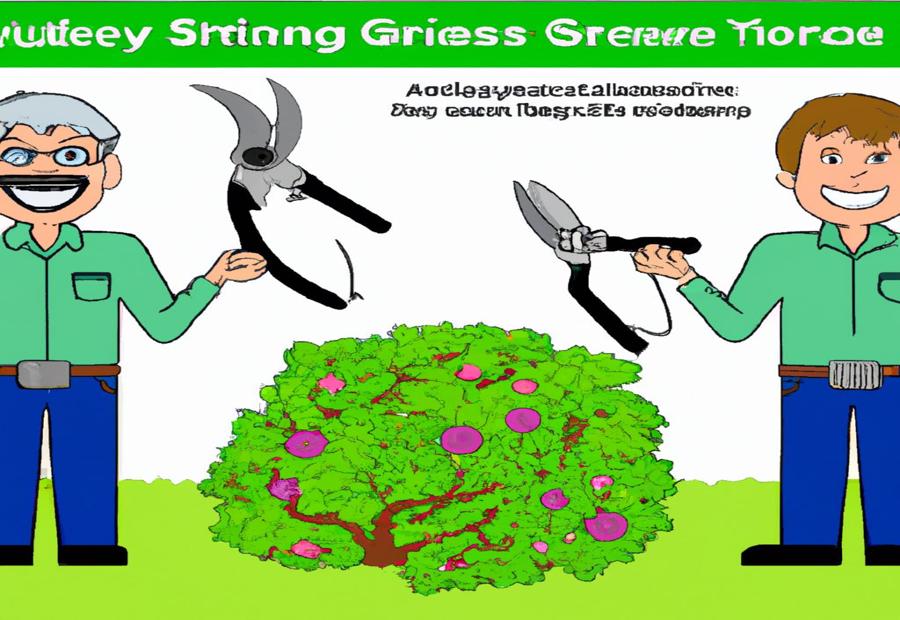
Photo Credits: Gardeninggurus.Org by Gerald Taylor
After rejuvenation pruning, shrubs require special attention and care to thrive. Discover the essential steps to ensure the health and vitality of your shrubs post-pruning. From providing extra care and monitoring environmental conditions to avoiding synthetic fertilizers and seeking expert advice, this section will guide you through the crucial maintenance practices needed for your rejuvenated shrubs. Watch them flourish and thrive with the proper care and nurturing techniques discussed ahead.
Extra care required for shrubs after pruning
After rejuvenation pruning, shrubs require special care for their health and recovery. For this, consider these three steps:
- Watering: Monitor the moisture levels of the soil and water accordingly. Too much can lead to root rot or other fungal diseases.
- Mulching: Apply a layer of mulch around the base of the shrub. It will help retain moisture, suppress weed growth, and regulate soil temperature. Avoid piling mulch against the stems or trunk.
- Monitoring: Watch out for signs of stress or damage like wilting leaves, discoloration, or pest infestations. Take action if any arise to avoid further damage.
By following these steps, you can help your shrubs recover from pruning. Note that these are only general guidelines and may vary depending on the species or location. Be a plant detective and keep your plants hydrated through monitoring and watering.
Monitoring environmental conditions and watering needs
Paying close attention to environmental factors is key for the well-being of shrubs! Temperature, rainfall, sunlight, wind and moisture levels should be monitored. This allows gardeners to adjust watering schedules accordingly. Assessing soil moisture is also essential. A soil moisture meter or physically touching the soil can help. Soil should remain moist but not waterlogged. Sunlight encourages photosynthesis, while wind protection prevents damage to branches. Lastly, natural amendments ensure optimal growth and vibrant flowering. Go green with your gardening and ditch synthetics!
Avoiding synthetic fertilizers and providing natural amendments
Natural amendments, instead of synthetic fertilizers, offer a balanced nutrient profile. Plus, they improve soil structure, allowing for better water retention and root penetration. Organic matter in natural amendments encourages beneficial microbial activity, aiding nutrient cycling whilst reducing impact on waterways and ecosystems.
Gardeners benefit from a holistic approach to gardening which promotes sustainability. This includes promoting biodiversity by creating a habitat for beneficial insects, birds, and other wildlife. It also encourages a balanced ecosystem that helps control pests naturally.
Moreover, natural amendments release nutrients slowly over time, sustaining growth and reducing the risk of leaching into water sources. To reap these benefits, high-quality compost or well-rotted manure should be used as natural amendments. These materials are rich in organic matter and provide a diverse range of nutrients. Applying them around the base of shrubs during spring or fall ensures a steady supply of nutrients throughout the growing season. Regularly monitoring of soil pH levels helps determine if any extra amendments are necessary for optimal shrub growth.
Seeking assistance from a Certified Arborist if unsure about the process
A Certified Arborist is the best person to consult when looking into rejuvenation pruning for shrubs. They possess the knowledge and expertise necessary to evaluate the health and condition of the shrub. This professional guidance helps minimize the risk of harming the shrub.
Certified Arborists are well-versed in shrubs and their growth patterns. With this understanding, they can provide advice on how to properly prune and rejuvenate your shrubs. They assess the shrub’s needs, taking into account factors such as its health and appearance. They can also identify any potential issues that may come up during the pruning process.
In addition to their knowledge, Certified Arborists have access to specialized tools and equipment. They understand proper pruning angles and techniques which decreases the chances of injuring the shrub. By enlisting aid from a Certified Arborist, you can ensure that your shrub receives the care it needs.
A great example of why it is important to rely on experts for complex gardening tasks is a homeowner who tried to do rejuvenation pruning on their own. Unfortunately, they ended up damaging several valuable shrubs in their garden. With no prior knowledge or guidance, they cut the branches at incorrect angles which caused immense stress to the plants. Eventually, the homeowner sought help from a Certified Arborist who was able to salvage what was left of the damaged shrubs. This experience taught them the importance of relying on professionals for complex gardening tasks like rejuvenation pruning.
Examples of Shrubs Suitable for Rejuvenation Pruning

Photo Credits: Gardeninggurus.Org by William Garcia
When it comes to rejuvenation pruning for shrubs, there are many examples of shrubs that respond well to this technique. From snowball viburnum to lilacs, forsythia, and honeysuckle, this section will explore a wide range of options. Whether you’re looking to revitalize your garden or enhance its beauty, these shrubs offer potential for stunning growth and rejuvenation. So, let’s dive into the world of shrubs suitable for rejuvenation pruning and discover the possibilities they hold.
Snowball viburnum, Redtwig dogwood, False indigo, Skunkbush sumac, Fragrant sumac, Elderberry, Bush honeysuckle, Ninebark, Prairie rose, Western wild rose, Shrubby cinquefoil, Pussy willow, lilacs, forsythia, spirea, viburnums, honeysuckle, and more
Snowball viburnum, Redtwig dogwood, False indigo, Skunkbush sumac, Fragrant sumac, Elderberry, Bush honeysuckle, Ninebark, Prairie rose, Western wild rose, Shrubby cinquefoil, Pussy willow, lilacs, forsythia, spirea, viburnums, and honeysuckle – all these shrubs are suitable for rejuvenation pruning. This pruning technique can enhance their healthy growth, improve overall look and maximize flowering. Late winter or early spring is the best time to do rejuvenation pruning for these plants. However, some may need exceptions as they bloom on old wood.
Each shrub has its own pruning needs. Hard pruning, where the entire shrub is cut down to the ground, is suitable for some. Others may benefit from gradual pruning – removing one-third of old branches over three years. It’s important to be aware of these needs before pruning.
When pruning, take into account certain factors. Not all shrubs react well to this technique. Check their health and appearance before pruning. Use proper pruning angles and tools to avoid damage. Keep in mind that there could be effects on the landscape and flowering in the first year after rejuvenation pruning.
Once done, extra care and maintenance is required. Monitor environmental conditions and watering needs. Avoid synthetic fertilizers and provide natural amendments. If unsure, seek assistance from a Certified Arborist.
Rejuvenation pruning can bring a new lease on life to these shrubs and a beautiful garden to admire.
Conclusion and Recommendation
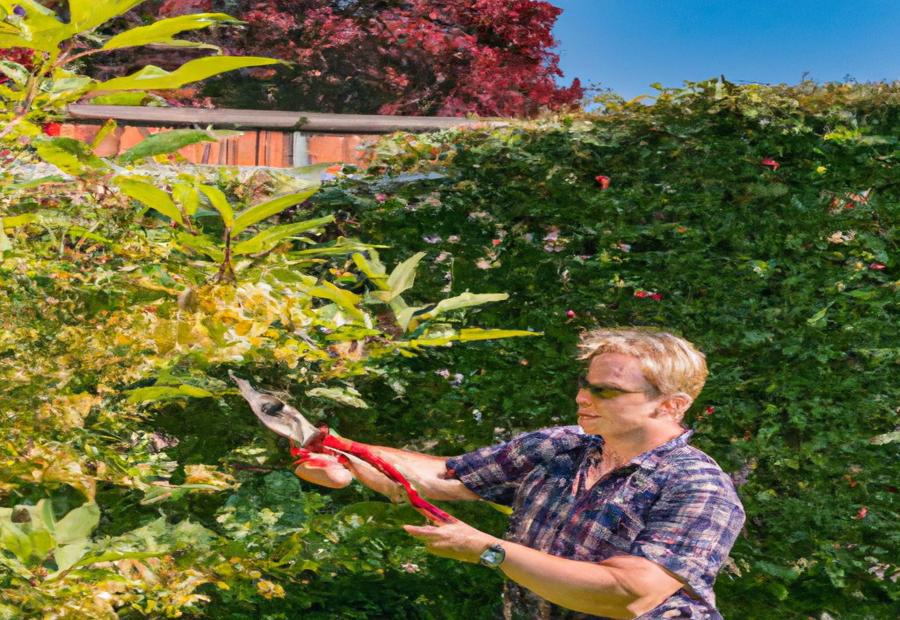
Photo Credits: Gardeninggurus.Org by Jack Green
Taking a look at the conclusion and recommendation section, we’ll recap the benefits and importance of rejuvenation pruning for shrubs. Additionally, we’ll provide recommendations for seeking professional assistance and ongoing maintenance. These insights will help you make informed decisions and ensure the health and vitality of your shrubs.
Recap of the benefits and importance of rejuvenation pruning for shrubs
Rejuvenation pruning can be beneficial for shrubs. It helps them stay healthy and look great. Usually, it should be done during late winter or early spring. Unless the shrub blooms on old wood. So, consider the shrub’s health and appearance before pruning.
Rejuvenation pruning encourages healthy growth and boosts flower production. It produces new shoots, making the shrub fuller and more attractive. Two common techniques for this pruning are hard pruning and gradual pruning. Hard pruning is great for overgrown or damaged shrubs. Gradual pruning is better for weaker growth patterns.
Some shrubs should not be pruned. These include species that bloom on old wood and have weaker growth patterns. Also, it’s important to use the correct angle and pruning tools to avoid damaging the shrub. The first year after pruning may have fewer blooms or temporarily affect the landscape. With proper maintenance, the shrub will recover.
To help the shrub recover, monitor environmental conditions and watering needs. Use natural amendments to nourish the soil. If you need help, get advice from a Certified Arborist.
Pro Tip: Before pruning, assess the shrub’s health and appearance. Check for diseases and pests. Address any issues to ensure successful rejuvenation.
Recommendations for seeking professional assistance and continued maintenance
Seeking pro help and keeping up with maintenance for rejuvenation pruning of shrubs is a must for best results! Pro know-how and guidance throughout the process is key in applying the right techniques at the right times. Additionally, ongoing maintenance by pros can help keep an eye on shrub health and look post-pruning. Any necessary changes or interventions can be made this way.
- Prof. Assistance: Get a Certified Arborist or experienced landscaper for rejuvenation pruning of your shrubs. They know the species and their pruning requirements. They can assess the health and needs, recommend suitable pruning techniques, and tell you when to do it.
- Maintenance Services: After rejuvenation pruning, ongoing care is key. Services include regular check-ups, monitoring environment, assessing watering needs, and applying natural amendments or fertilizers tailored to your shrubs.
- Prevent Damage: Expert help prevents unintentional damage during pruning. Pros have the right tools and know-how. They remove old branches while preserving new growth and avoiding stress on plants.
- Monitoring: Pro help is especially valuable the first year after rejuvenation pruning. They closely monitor plant responses, including landscape changes and flowering patterns. Any issues are identified and addressed, to optimize future blooming seasons.
Must get pro help and practice maintenance after rejuvenation pruning. This will ensure shrubs maintain health and appearance in the long run. Ongoing care and guidance from pros is key to reap the benefits of rejuvenation pruning for your shrubs.
Some Facts About Rejuvenation Pruning For Shrubs:
- ✅ Rejuvenation pruning involves cutting shrubs down to the ground or a few inches from the ground to promote healthy growth. (Source: Team Research)
- ✅ This technique is typically done in late winter or early spring, before bud break. (Source: Team Research)
- ✅ Rejuvenation pruning is necessary for shrubs that are overgrown, leggy, dying in the interior, or have slowed flowering. (Source: Team Research)
- ✅ Shrubs that benefit from rejuvenation pruning include Viburnum, Redtwig dogwood, False indigo, Snowball viburnum, and Elderberry. (Source: Team Research)
- ✅ Gradual rejuvenation pruning involves removing one-third of the stems each year over a three-year period, resulting in a smaller, more densely branching shrub. (Source: Team Research)
FAQs about Rejuvenation Pruning For Shrubs
What is rejuvenation pruning for shrubs?
Rejuvenation pruning is a technique used to rejuvenate overgrown shrubs by cutting them down to the ground or a few inches from the ground. It involves removing old or overgrown limbs to allow new, healthy branches to grow and improve the health and appearance of the shrubs.
When is the best time to perform rejuvenation pruning?
The best time to perform rejuvenation pruning is in late winter or early spring, before bud break. However, it should be done after the blooms fade for shrubs that bloom on old wood, such as spring-blooming plants like azaleas and camellias.
Which shrubs benefit from rejuvenation pruning?
Several species of shrubs benefit from rejuvenation pruning, including snowball viburnum, redtwig dogwood, false indigo, skunkbush sumac, fragrant sumac, elderberry, bush honeysuckle, ninebark, prairie rose, western wild rose, shrubby cinquefoil, and pussy willow.
How often should rejuvenation pruning be done?
Rejuvenation pruning should be done every three to five years, or when the shrub starts to look overgrown or stops flowering. It is important to avoid stressing the plants by pruning too frequently.
Can all shrubs tolerate rejuvenation pruning?
Not all shrubs can tolerate rejuvenation pruning. Shrubs in poor health or recovering from damage should be left to regain their vigor. Evergreen shrubs have different pruning requirements and should not be cut down to the base. Shrubs with a single main stem or those that have been grafted onto rootstock should also not be pruned in this manner.
What are the benefits of rejuvenation pruning?
Rejuvenation pruning promotes the growth of new, vigorous branches, resulting in a smaller, younger shrub that flowers more profusely. It improves the overall appearance of the shrub, makes it easier to control with regular thinning, and can have an immediate impact on the landscape.


